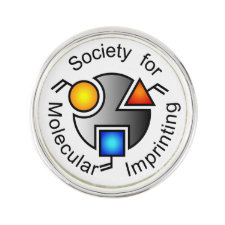
Authors: Liu ZH, Zhang X, Liang A, Sun LQ, Luo AQ
Article Title: Preparation and application of melamine molecularly imprinted photonic crystal hydrogel sensor.
Publication date: 2019
Journal: Chinese Journal of Chromatography
Volume: 37
Issue: (3)
Page numbers: 287-292.
Alternative URL: http://pub.chinasciencejournal.com/ChineseJournalofChromatography/45816.jhtml
Abstract: In this paper, molecularly imprinted photonic crystal hydrogels (MIPHs) were prepared by combining photonic crystals with molecular imprinting technology. The MIPHs were used as optical sensors for the rapid reorganization and detection of melamine in water samples. In this experiment, melamine was used as a template molecule, and the MIPHs were prepared by successive self-assembly, polymerization, and template removal. Morphological characterization by scanning electron microscopy (SEM) showed that the MIPHs possessed a highly ordered three-dimensional (3D) macroporous structure containing nanocavities. As optical sensors, the MIPHs were able to transform molecular recognition events into fluorescence signals for rapid and highly selective and sensitive recognition of the target molecule. Based on color changes of the MIPHs, the target analyte could be quickly identified by analysis with image software or even by observation with the naked eye. Under optimal conditions, the Bragg diffraction peak of the MIPHs shifted from 563 to 608 nm when exposed to melamine in mass concentrations of 10-11 to 10-6mol/L, whereas there were no obvious peak shifts when it was exposed to structural analogues of melamine.
Template and target information: melamine
Author keywords: molecularly imprinting, Photonic crystal, Melamine, Optical sensing



Join the Society for Molecular Imprinting

New items RSS feed
Sign-up for e-mail updates:
Choose between receiving an occasional newsletter or more frequent e-mail alerts.
Click here to go to the sign-up page.
Is your name elemental or peptidic? Enter your name and find out by clicking either of the buttons below!
Other products you may like:
 MIPdatabase
MIPdatabase









